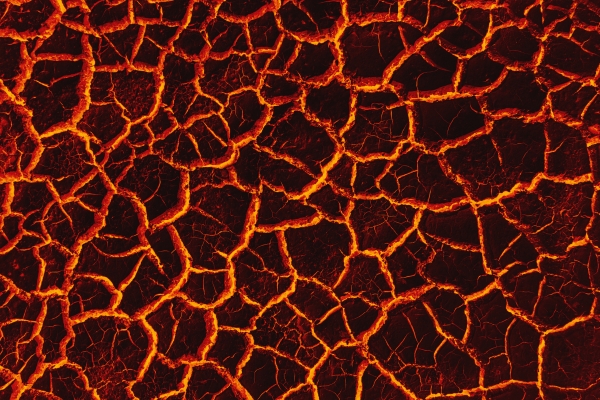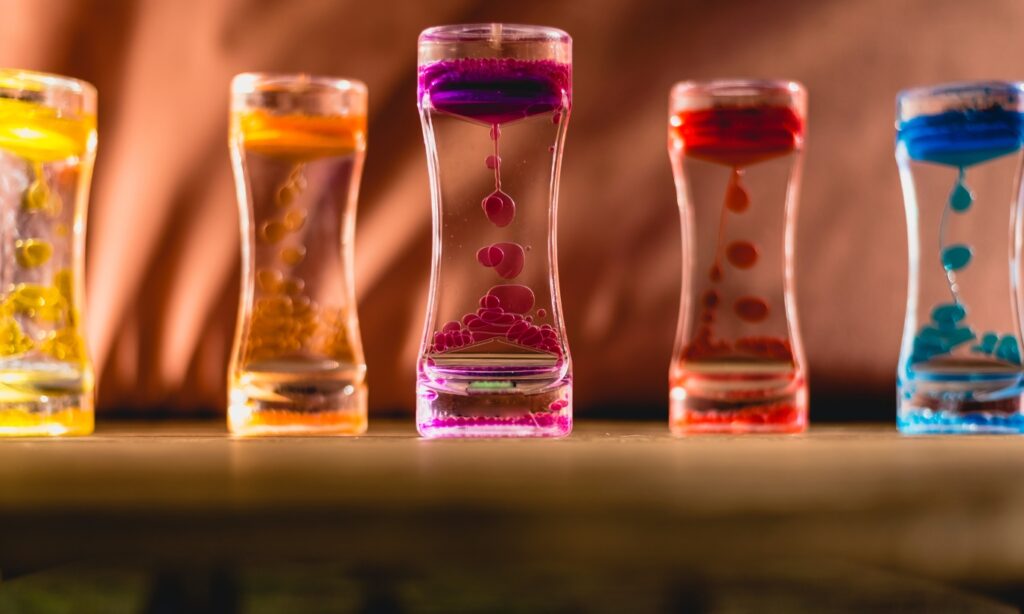Lava lamps have long fascinated observers with their mesmerizing display of colorful blobs floating gracefully within a liquid medium. Understanding how lava lamps work unveils the intriguing blend of science and artistry behind this iconic decor piece. Essentially functioning as a captivating interplay of heat and density differentials, the mechanics of lamps draw upon principles of fluid dynamics and thermodynamics to create their distinctive visual symphony. By delving into the inner workings of these enchanting devices, one can gain a deeper appreciation for the harmony of physics and aesthetics that converge to produce their timeless allure.
What Are Lava Lamps?
Lava lamps, known for their striking visual appeal, are decorative lighting fixtures that consist of a glass vessel filled with a transparent liquid, typically water or mineral oil, and colorful wax or oil-based substances. The lamp is illuminated from below, usually by an incandescent bulb, which emits heat to warm the liquid and the floating blobs within. As the lamp warms up, the blobs begin to rise and fall within the liquid in a mesmerizing dance, creating an ever-changing display of shapes and colors. lamps have been popular since their invention in the 1960s, enduring as timeless pieces of decor that add ambiance to any space.
How Heat Affects The Lamp?
Heat plays a crucial role in the operation of lava lamp, driving the motion of the wax or oil blobs and shaping their behavior within the liquid medium. When the lamp is turned on, the heat from the bulb causes the wax or oil mixture at the base of the lamp to heat up and expand, reducing its density. As the density decreases, the wax or oil blobs become less dense than the surrounding liquid, causing them to rise to the top of the lamp. As they reach the cooler upper layers, the blobs lose heat to the surrounding environment, causing them to cool and increase in density once again. This increase in density causes the blobs to sink back down to the bottom of the lamp, where they are reheated by the bulb and the cycle repeats.
The Science Behind Lava Lamps

Lava lamp, those iconic fixtures of ambient lighting, derive their captivating visual allure from a delicate interplay of scientific principles. At their core, these lamps harness the fundamental concepts of fluid dynamics and thermodynamics to create their mesmerizing display. By understanding the science behind lamps, one gains insight into the intriguing blend of physics and aesthetics that underpins their charm.
The Role Of Wax And Oil

Central to the operation of lava lamps is the composition of the materials they contain. Typically, these lamps feature a combination of wax and oil-based substances. The wax, often a mixture of paraffin or other hydrocarbons, serves as the primary medium for creating the iconic blobs that rise and fall within the lamp. Oil, usually mineral oil, provides viscosity and stability to the liquid medium, ensuring smooth motion and preventing the wax from solidifying at room temperature. Together, these components form a dynamic system that responds to changes in temperature to produce the mesmerizing motion characteristic of lamps.
Heat Source In Lava Lamps

Key to the functioning of lava lamps is the heat source that initiates the motion of the wax and oil within the lamp. Typically, this heat is provided by an incandescent bulb positioned at the base of the lamp. As the bulb emits heat, it warms the surrounding air and, more importantly, the liquid and wax mixture within the lamp. This increase in temperature causes the wax to expand and become less dense than the surrounding oil, leading it to rise towards the surface of the lamp. Conversely, as the wax reaches the cooler upper layers of the lamp, it loses heat to the environment, causing it to cool and become denser once again, prompting it to sink back down. Thus, the heat source acts as the catalyst for the rhythmic motion of the wax and oil, driving the mesmerizing dance that defines the visual appeal of lamps.
Creating The Lava Effect

The hallmark “lava effect” in lamps is achieved through a carefully orchestrated combination of heat and materials. As the lamp heats up, the wax or oil mixture at the base begins to warm and expand, becoming less dense than the surrounding liquid. This buoyant wax then rises to the top of the lamp, where it cools and increases in density, causing it to sink back down. This cyclical motion, driven by heat differentials, creates the mesmerizing blobs and trails reminiscent of flowing lava. Achieving the perfect lava effect requires precise calibration of the lamp’s heat source and the viscosity of the liquid medium, ensuring a balance that fosters fluid motion and captivating visuals.
Design And Aesthetics
Lava lamp are not merely functional lighting fixtures; they are also statement pieces that contribute to the ambiance and aesthetic appeal of a space. Their distinctive design, characterized by sleek glass vessels and vibrant color schemes, adds a touch of retro charm to any interior decor. From classic lamps with lava-like blobs to modern iterations featuring glitter or metallic elements, the variety of designs allows for personal expression and customization. Whether serving as a focal point in a living room or providing ambient lighting in a bedroom, It enhances the atmosphere with their unique blend of form and function, making them timeless additions to any environment.
Maintenance And Safety Tips
While lava lamps are relatively low-maintenance, proper care and attention are essential to ensure their longevity and safe operation. Regular maintenance includes cleaning the glass vessel and checking for any signs of wear or damage to the electrical components. It’s also crucial to monitor the lamp’s heat levels to prevent overheating, which can compromise both the lamp’s performance and safety. Additionally, placing the lamp on a stable surface away from direct sunlight and heat sources can help prevent accidents and prolong its lifespan. Following these maintenance and safety tips ensures that Salt Lamps Do continue to delight and inspire with their captivating display while remaining a safe and reliable lighting option for any space.
Applications Beyond Decoration

Beyond their role as decorative lighting fixtures, It has found surprising applications in various fields. In scientific settings, lamps have been used as visual aids to demonstrate principles of fluid dynamics and convection currents. Their mesmerizing motion provides a tangible representation of abstract concepts, making them valuable tools for education and research. Additionally, It has been incorporated into therapeutic practices, Where their soothing ambiance and rhythmic motion are believed to promote relaxation and stress relief. In creative industries, artists and designers have embraced lava lamps. As sources of inspiration, incorporating their vibrant colors and fluid forms into artwork and product designs. The versatility of lamps extends far beyond mere decoration, showcasing their enduring appeal and potential for innovation.
The Enduring Popularity Of Lava Lamps
Despite the passage of time and changing trends, lava lamps have maintained a steadfast popularity that transcends generations. Since their introduction in the 1960s, these iconic fixtures have captivated. The imagination of countless individuals, earning a cherished place in popular culture and collective memory. Their timeless appeal lies in their ability to evoke nostalgia for bygone eras while remaining relevant and captivating to contemporary audiences. Whether admired for their retro charm, admired for their mesmerizing motion, or appreciated for their versatility. It continues to enchant and inspire, proving themselves as enduring symbols of creativity and innovation.
Conclusion
Lava lamps represent a harmonious fusion of artistry and science, captivating observers with their mesmerizing motion and vibrant hues. Beyond their role as decorative accents, lamps have found diverse applications in education, therapy. And design, showcasing their versatility and enduring appeal. As symbols of creativity and innovation, It continues to inspire and delight. Serving as timeless reminders of the power of imagination and the beauty of fluid dynamics. With their timeless charm and universal appeal, It are poised to remain beloved icons for generations to come.
